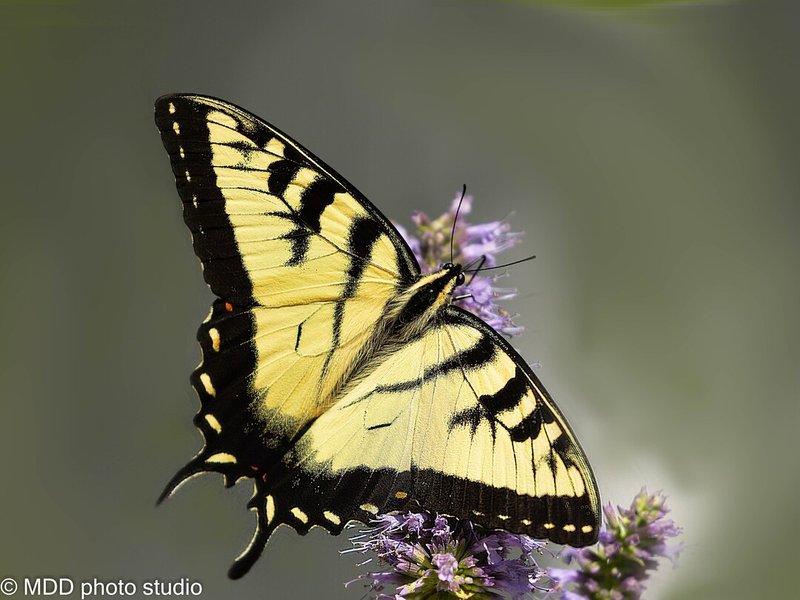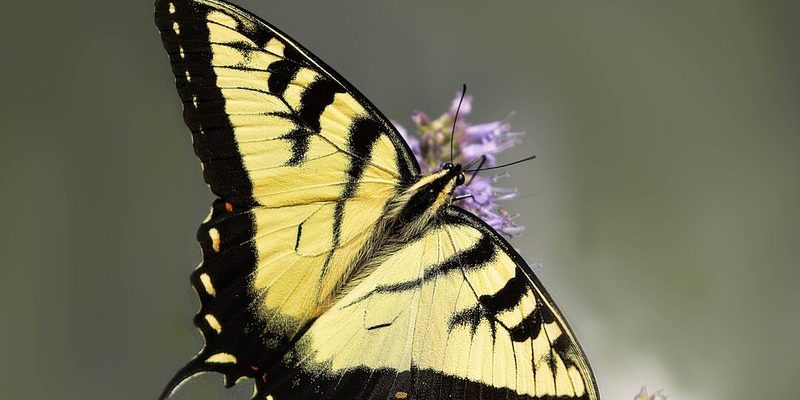
So, how do these lovely insects manage to communicate? They rely on a mix of visual signals, pheromones, and social behaviors. Let’s dig in a little deeper and explore how these delicate creatures express themselves and interact with one another and their surroundings.
Visual Signals: The Colorful Language of Swallowtail Butterflies
Swallowtail butterflies showcase vivid patterns and colors that play a significant role in their communication. These bright markings aren’t just pretty; they can signal different things to other butterflies. For instance, a swallowtail might spread its wings wide, displaying its bright colors to attract a mate or ward off a rival.
You might be wondering how this works in practice. When a male swallowtail spots a female, he often performs a series of aerial displays. These aerial maneuvers can show off his size and vigor, helping him stand out in the competition. The more vibrant and healthy he appears, the better his chances of wooing the female.
But it doesn’t stop at attracting mates. Those bright colors can also function as a warning. If a swallowtail is unwell or feels threatened, it might flash its colors to signal danger or unappealing taste to predators. This is an important survival tactic, as many predators learn to avoid butterflies that are brightly colored.
Pheromones: The Scented Signals
Aside from visual signals, swallowtail butterflies also rely on chemical communication through pheromones. These are essentially scent signals that convey messages to others of their species. Imagine a butterfly using a “scent trail” to communicate its availability or territory.
During mating season, female swallowtails release specific pheromones that can attract males from quite a distance. Think of it like the butterfly version of sending out invitations to a party! The stronger the scent, the more likely it is that males will flock to her.
Interestingly, pheromones can also provide information about a butterfly’s health and reproductive status. If a female is healthy, her scent will convey that information to potential mates. This chemical communication adds another layer to their interaction, showcasing just how intricately linked their behaviors are to their survival and reproduction.
Body Language: More Than Just Fluttering Wings
Swallowtail butterflies, like many creatures, utilize body language to communicate. This might not be as obvious as waving arms or nodding heads, but it’s just as important. Subtle movements can indicate a range of emotions, from aggression to courtship.
For example, when two males cross paths, they might engage in a behavior known as “wing waving.” This is a display of dominance, where one butterfly tries to assert itself over the other. The more assertive butterfly will often engage in rapid wing movements to communicate its strength and readiness to defend its territory.
Additionally, if a swallowtail feels threatened, it may adopt a specific posture by closing its wings or even feigning death. This behavior is a clever way of tricking predators into thinking the butterfly is not worth their time—kind of like playing dead when caught off guard!
Interactions with the Environment: The Art of Foraging
Swallowtail butterflies also communicate with their environment, particularly when it comes to foraging for food. They have keen eyesight that helps them spot flowers from a distance. Once near a bloom, they use their long proboscis to sip nectar.
But here’s the catch: they don’t just forage in isolation. Other butterflies can observe where a swallowtail feeds. If one is consistently seen visiting a particular flower, others may follow suit, learning that it’s a profitable spot. This social learning is essential in helping butterflies make effective foraging decisions.
Moreover, certain flowers might emit scents that attract butterflies, further enhancing their interaction with the environment. The dance between the butterflies and the blooms is a mutual benefit, where both parties thrive in the process.
Social Interactions: Building a Community
Swallowtail butterflies are not only solitary creatures; they can also form social interactions within their species. During specific seasons, you might observe groups of swallowtails congregating in areas rich with nectar or along water sources.
This social behavior is particularly common during mating season when males and females gather in the same locations. It’s a little like attending a social event where everyone has the same goal: finding a mate. These gatherings can lead to increased opportunities for mating while allowing the butterflies to engage in friendly competition.
In these groups, you might witness varied interactions—from friendly displays to skirmishes over food resources or mates. Such dynamics showcase the complexities of their social structure and communication methods, revealing more than just their beauty.
Predator Avoidance: Communicating Threats
Part of the swallowtail’s communication involves alerting others about potential dangers. When one butterfly detects a predator, it can use movements and sounds to warn its peers. It might flutter away quickly or make sharp movements, signaling that all is not well.
For instance, if a swallowtail spots a bird lurking nearby, it might do a quick darting flight to show urgency. Other butterflies nearby can then take notice and react accordingly. This type of communication is vital for survival and reflects their ability to work together to avoid threats.
Interestingly, some species have evolved to mimic the appearance of toxic butterflies, using that mimicry to confuse predators. This clever trick is another example of how communication plays a role not just in social interactions, but also in survival.
Swallowtail butterflies exemplify how communication in nature is a rich and dynamic process. From their striking visual displays to the subtler scents and movements, these creatures have developed unique ways to interact with each other and their environment. Whether it’s through eye-catching colors, pheromones, or social behaviors, each method plays a crucial role in their survival and reproduction.
Just like a well-composed symphony, every element of communication contributes to the overall harmony of their existence. By observing and understanding these interactions, we can appreciate not just the beauty of swallowtails, but the intricate ways they connect within their world. So next time you spot these butterflies in your garden, take a moment to appreciate the depth of their communication—it’s a captivating dance of nature that goes far beyond what meets the eye.

